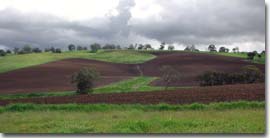Climate
|
| Average annual rainfall in the area ranges from 500 mm/yr near Lake Bolac to more than 910 mm in the Cobboboonee Forest, west of the Grampians. The region has a high winter rainfall. (Glenelg CaLPB, 1997). |
During January, the average maximum temperature in Warrnambool is just 22.2°C and the minimum 12.8°C. In July, Warrnambool’s average temperature high is 13.3°C and its low 6.2°C. Mean annual rainfall in Warrnambool is 743 mm.
Temperatures in Casterton are significantly higher than in the south during summer, with the January average maximum temperature being 27°C and the minimum 11.8°C. In July, Casterton’s average temperature high is 13.3°C and its low 4.9°C. Mean annual rainfall in Casterton is 655 mm.
Source: Bureau of Meteorology Climate Averages website
Climate and Weather Data on the Bureau of Meteorology website
Forecast information, including provincial city and fire weather forecasts (external link)
Glenelg region climate averages (external link)
Warrnambool climate information (external link)
The Bureau of Meteorology website provides a regular radar update covering a 128 km radius from Melbourne.
References
Bureau of Meteorology Climate Averages website.
Glenelg Regional Catchment and Land Protection Board. (1997). Regional Catchment Strategy, Glenelg CaLPB, Hamilton.



